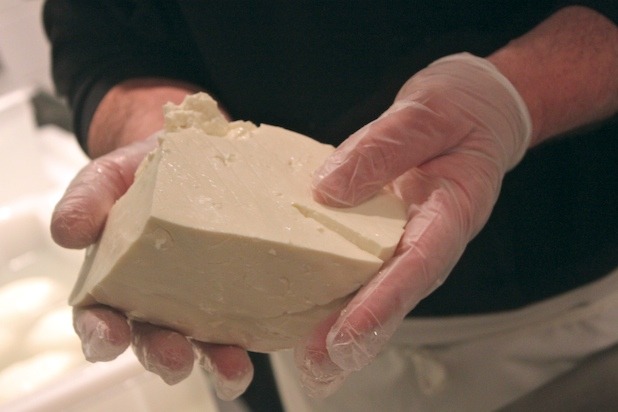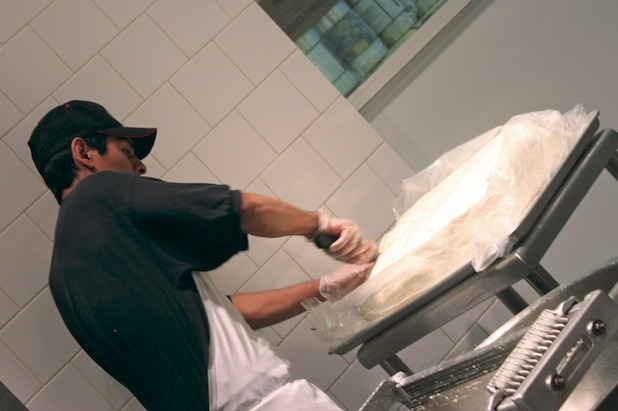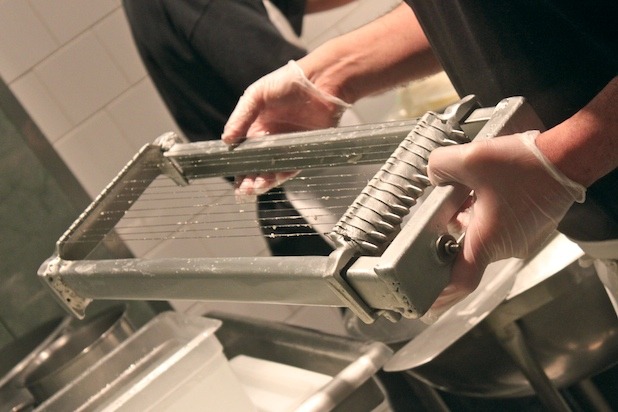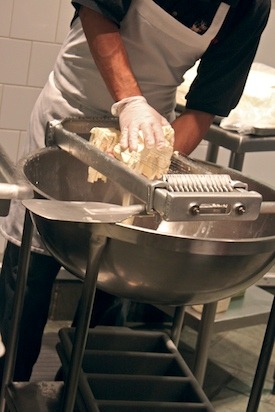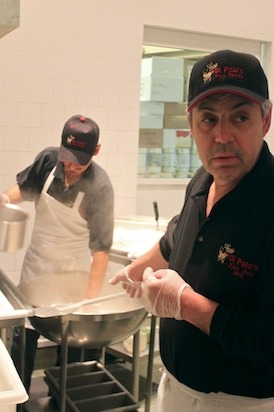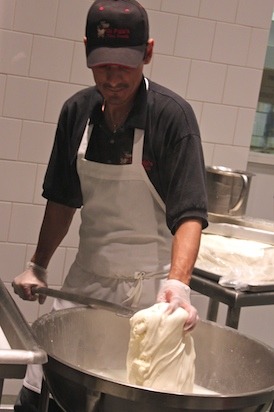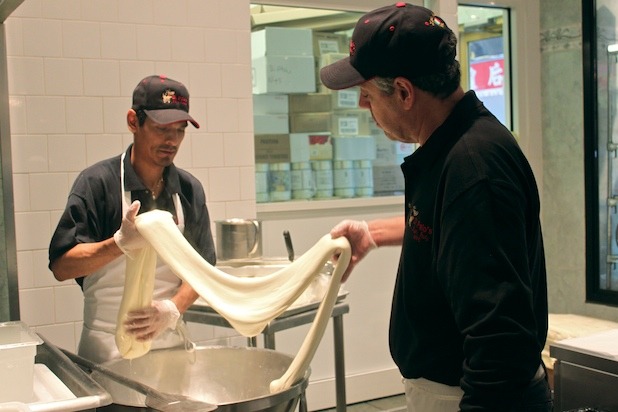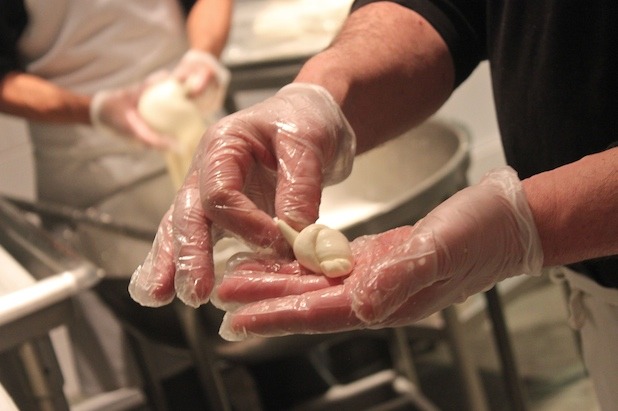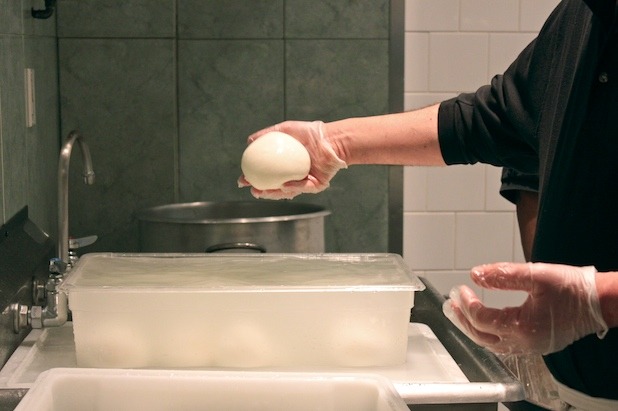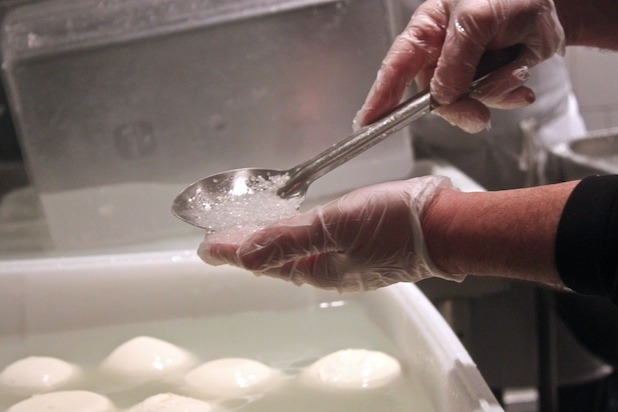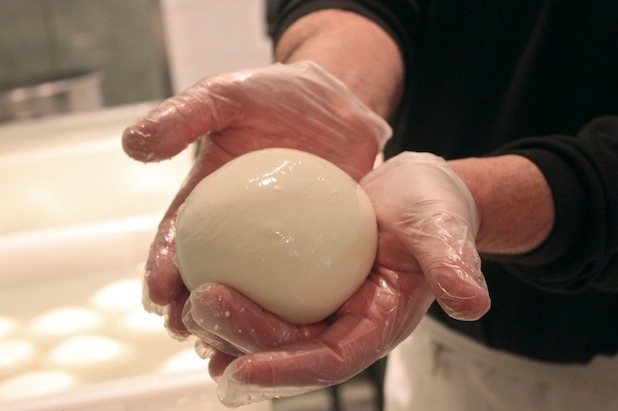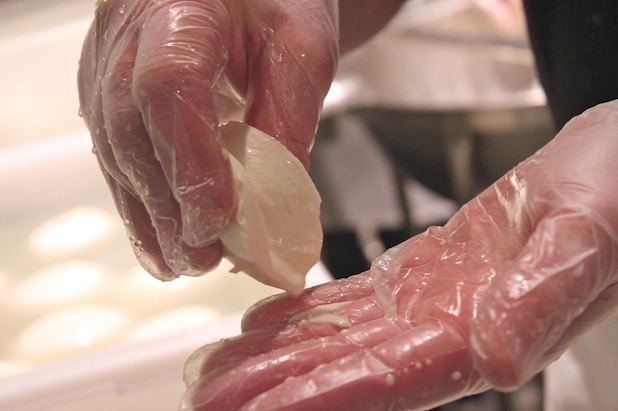How To Make Di Palo's Mozzarella Slideshow
Curd, or cagliata in Italian, is the fat and protein by-product of milk that has been separated from whey.
Cutting the Massive Curd
Di Palo's uses fresh mass curd that gets cut into smaller squares before heating. For personal use, you can purchase one of these smaller pieces, cut to order.
Grandma Di Palo's Chitarra
The chitarra — Italian for guitar — cuts down the squares of curd before they hit the hot water. This particular chitara has been in the family for three generations and is a more traditional tool than a knife or machine.
Re-cooking and Neutralizing the Curd
Drop the curd into 180 degree water that has a little whey and a little butter fat. "We want to neutralize the curd," says Lou, "so let it sit there for a few minutes." The cold curd will bring the temperature down to roughly 145 degrees.
Bringing the Curd Back to Temperature
After the curd has been neutralized, replace some of the cooler water with hot water and bring the temperature back up to 160 degrees.
Working the Curds
"He's working the curds till it's one big, tender mass of curds," explains Lou. This step is really where experience pays off, as the right texture isn't obvious to the untrained eye. And let's not forget, that cheese demands a pair of weathered hands — it's still about 160 degrees.
Stretch it Like Taffy
Just before balling the mozzarella, Lou says they look for "a taffy-like consistency," and most importantly that you "know how to understand the stretch." Lou and René definitely 'understand the stretch' and recognize the perfect consistency before moving forward.
Mozzare!
Mozzarella comes from the word mozzare, meaning to tear off. At this point Lou and René begin to pull off various sizes of mozzarella from the mass to shape it.
This little knot, or nodini, goes great in olive oil marinades.
Shock It
Place the shaped mozzarella into cold water to shock the outer layer. Lou tells us that this crucial step "creates a shell but at the same time maintains the creamy texture."
Salt Water Bath
Transport the mozzarella from the cold water to the cold salt water where it picks up extra flavor from the coarse Sicilian sea salt. But how do you know how much salt to use? "So it tastes like the sea," says Sal Di Palo.
The Perfect Ball
TDM: "What's the secret to making such perfect looking, perfect tasting mozzarella?"
Lou Di Palo: "The secret is experience. The more you do it, the more efficient you become."
The Perfect Taste
"Good mozzarella should drip the milk." By all standards, this is definitely good mozzarella.
